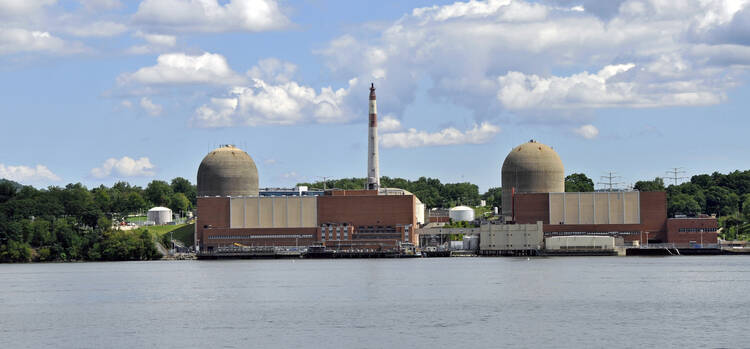What’s worse than squeezing a few more productive years out of one of the nation’s oldest nuclear power plants, one that’s within radioactive spitting distance of a major American city and about a mile from an earthquake fault line? How about running a high-pressure natural gas pipeline—you know, the kind known to spectacularly detonate every once in a while—110 feet or so away from it? Did I mention the 40 years worth of radioactive fuel rods stored on site?
That potentially apocalyptic landscape is not the implausible setting for a low-budget thriller; it’s what is actually happening in northern Westchester County in New York State, where you’ll find the Indian Point nuclear power plant looming over the Hudson River. Just over 36 miles down river are millions of New Yorkers who presumably would have to be evacuated in the event of a major accident at the facility. Its current owners, Entergy Corporation, have long told folks that there is NOTHING to be concerned about at the facility. But a recent transformer fire that led to an emergency reactor shutdown and the discovery of radioactive water leaching into the ground around the plant have not exactly been confidence-builders.
Many New Yorkers have charged for years that Indian Point is just too close to the city to remain in operation, a constant temptation to terrorists and even under the best of circumstances an ecological threat that no amount of emergency planning can realistically prepare for. Locals are more worried now that preliminary work has begun on a multi-state project to replace an existing gas pipeline with a much larger 42-inch, high-pressure line. Spectra Energy, a corporate moniker apparently borrowed from an early Ian Fleming novel, is pressing for the Algonquin Incremental Market Project. The project was approved by the Federal Energy Regulatory Commission in 2015, and Spectra work teams quickly began buzz-sawing through Westchester parkland and the backyards of furious residents. Many here find it incomprehensible that a project denounced by residents and challenged by local elected officials, up to and including Gov. Andrew Cuomo, has nonetheless steamrolled over all community objections because of the green light provided by an obscure federal agency.
The new pipeline will move fracked natural gas from Pennsylvania under the Hudson River into Westchester County and thence to points north. Many suspect the sponsors of the project are attempting to situate the fracking industry, now awash in surplus production, for potential sales of natural gas to Europe. That would bail out frackers in Pennsylvania, currently choking on debt and collapsing commodity prices, but locals have reasonably asked, What do we get out of the deal? So far most have only seen property values plummet as Spectra work crews chew up what had been pristine scenery.
A handful of local residents have become near full-time resistors to AIM. Most are motivated by the direct impact on their communities, ranging from destruction of habitat all the way to the potential for a Fukushima-style disaster. But many also see AIM as an example of a misplaced investment in a practice—fracking—and fossil-fuel infrastructure that is merely perpetuating harm to creation. They want to stop AIM from tearing up their backyards, surely, but they also are demanding wiser investment in sustainable energy for the future rather than in shoring up a struggling industry for the short-term enrichment of a few.
Paola Dalle Carbonare from Holy Name of Mary Parish in Croton, N.Y., has been a vocal objector to AIM. “I’m here as a mother and a Catholic,” she told local media during one demonstration, “answering the call of our fantastic leader Pope Francis who is urging us to get to the street and take action to protect Mother Earth.”
“There are serious concerns about the process and prospects,” one AIM resister told me. Armed with the federal regulatory commission’s approval, Spectra plans to finish work by November. “Their hope is to remain under the radar, out of the public’s consciousness, until the work is complete,” he said. “We have a tendency as a society to act precipitously, without fully understanding ramifications, interconnections and consequences and then have to deal with the results.” He is hoping, even as the trees around him are falling, that there is still a chance this time will be different.
Read America's editorial on the Chernobyl disaster from 1986.








